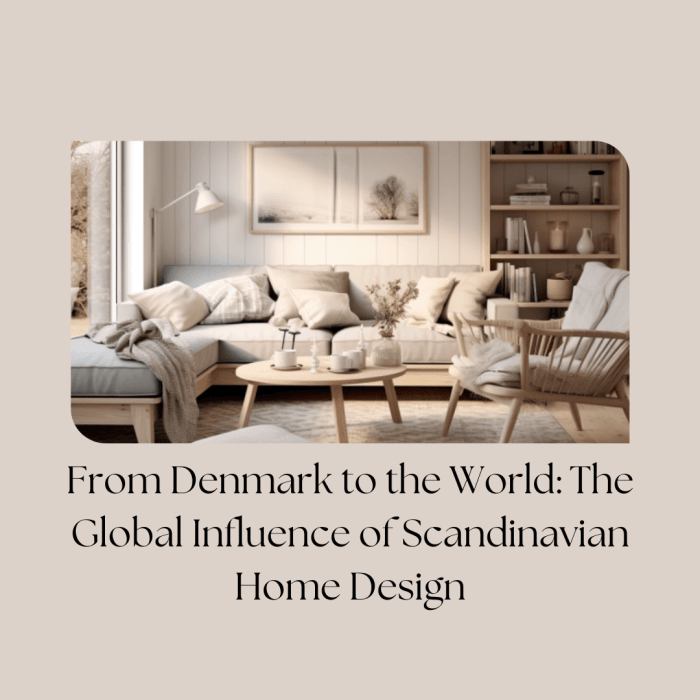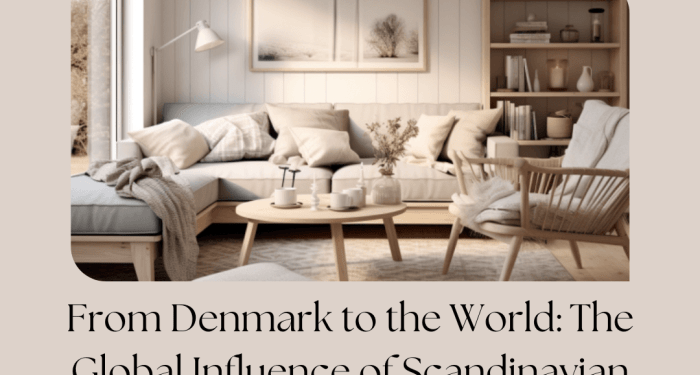Embark on a journey into the world of Sustainable Home Design Inspired by Scandinavian Living, where elegance meets eco-friendliness. Discover the harmonious balance between nature-inspired aesthetics and sustainable practices that define this unique design approach.
Delve deeper into the essence of Scandinavian living and how it intertwines with the principles of sustainability in home design.
Introduction to Scandinavian Living
Scandinavian design is renowned for its simplicity, minimalism, and functionality. This design aesthetic originated in the Nordic countries of Denmark, Norway, Sweden, and Finland, and has gained popularity worldwide for its clean lines and understated elegance.
Key Principles of Scandinavian Design
- Minimalism: Scandinavian design focuses on minimalistic elements, with an emphasis on clean, uncluttered spaces.
- Functionality: Every piece of furniture or decor in a Scandinavian home serves a purpose, combining practicality with aesthetics.
- Natural Materials: Wood, stone, and other natural materials are commonly used in Scandinavian design to bring a sense of nature indoors.
Emphasis on Simplicity and Minimalism
In Scandinavian homes, less is more. The mantra of "form follows function" is evident in the clean lines and simple shapes of furniture and decor pieces. Clutter is kept to a minimum, allowing for a sense of calm and tranquility in the living space.
Role of Nature and Natural Light
Nature plays a significant role in Scandinavian design, with an emphasis on bringing the outdoors in. Large windows allow natural light to flood the space, creating a bright and airy atmosphere. Natural elements such as plants and wooden accents further connect the interior to the natural world.
Elements of Sustainable Home Design
When it comes to sustainable home design, there are several key elements that contribute to creating an eco-friendly and energy-efficient living space. From the materials used to the appliances and lighting choices, each aspect plays a vital role in reducing the environmental impact of a home.
Eco-Friendly Materials
Choosing eco-friendly materials is essential in sustainable home design. Commonly used materials include:
- Bamboo: A fast-growing and renewable resource that can be used for flooring, furniture, and even textiles.
- Recycled Glass: Ideal for countertops and tiles, recycled glass reduces the demand for new raw materials.
- Cork: Harvested from the bark of cork oak trees, cork is a sustainable option for flooring and wall coverings.
- Reclaimed Wood: Salvaged from old buildings or furniture, reclaimed wood adds character and reduces the need for new timber.
Energy-Efficient Appliances and Lighting
Energy-efficient appliances and lighting fixtures are crucial in reducing electricity consumption and lowering utility bills. Some examples include:
- ENERGY STAR-rated appliances: These appliances are designed to use less energy without sacrificing performance.
- LED lighting: LED bulbs are long-lasting and consume less energy than traditional incandescent bulbs.
- Solar panels: Installing solar panels can harness renewable energy from the sun to power your home.
Proper Insulation and Ventilation
Proper insulation and ventilation are key components of sustainable home design as they help regulate temperature, improve indoor air quality, and reduce energy waste. Key considerations include:
- High-quality insulation: Insulating walls, floors, and roofs can prevent heat loss in winter and heat gain in summer.
- Eco-friendly insulation materials: Options like cellulose, wool, and recycled denim offer sustainable alternatives to traditional insulation materials.
- Natural ventilation: Designing for cross-ventilation and incorporating operable windows can reduce the need for mechanical cooling systems.
Incorporating Scandinavian Style into Sustainable Design
Scandinavian design principles are known for their simplicity, functionality, and connection to nature, making them a perfect fit for sustainable home design. By incorporating Scandinavian style into sustainable design, homeowners can create spaces that are not only aesthetically pleasing but also environmentally friendly.
Natural Elements in Sustainable Scandinavian Design
One key aspect of Scandinavian design is the use of natural elements like wood and stone. To incorporate these elements sustainably, homeowners can opt for responsibly sourced materials, such as reclaimed wood or locally quarried stone. By choosing materials with low environmental impact, they can reduce their carbon footprint while adding warmth and texture to their space.
Neutral Colors, Clean Lines, and Natural Textures
- Neutral colors such as whites, greys, and earth tones are commonly used in Scandinavian design to create a sense of calm and serenity. By painting walls with eco-friendly paints and choosing natural textiles for furniture and decor, homeowners can achieve a harmonious and sustainable aesthetic.
- Clean lines and minimalistic furniture are hallmarks of Scandinavian design, promoting functionality and simplicity. Opting for multifunctional pieces made from sustainable materials like bamboo or cork can enhance the efficiency and sustainability of the space.
- Natural textures like wool, linen, and leather can add depth and coziness to a sustainable Scandinavian home. Choosing organic fabrics and materials free from harmful chemicals ensures a healthy indoor environment for residents.
Sustainable Practices in Scandinavian Living

Scandinavian living embraces sustainable practices that prioritize eco-friendly solutions and mindful consumption. Recycling, upcycling, the concept of "lagom," and the presence of indoor plants all play crucial roles in creating sustainable homes in this region.
Recycling and Upcycling in Scandinavian Homes
In Scandinavian homes, recycling and upcycling are not just trends but essential practices for sustainable living. Residents actively sort their waste into different categories for recycling, ensuring that materials like paper, plastic, glass, and metal are reused or repurposed. Upcycling also thrives in this culture, with old items transformed into new, functional pieces through creative design and craftsmanship.
The Concept of “Lagom” and Sustainable Consumption
"Lagom," a Swedish term meaning "just the right amount," is deeply ingrained in Scandinavian culture and directly relates to sustainable consumption. It encourages individuals to find balance in their lives, avoiding excess and waste. By embracing "lagom," Scandinavian homeowners prioritize quality over quantity, investing in durable, timeless pieces that reduce the need for constant replacements and contribute to a more sustainable lifestyle.
Indoor Plants and Green Spaces in Sustainable Homes
Indoor plants and green spaces are integral to sustainable Scandinavian homes, promoting a connection to nature and improving indoor air quality. Residents often incorporate a variety of houseplants, such as ferns, succulents, and peace lilies, to create a calming and natural environment.
Additionally, green spaces like gardens and communal outdoor areas play a significant role in sustainable living, providing opportunities for growing food, fostering community connections, and supporting biodiversity.
Ending Remarks
In conclusion, Sustainable Home Design Inspired by Scandinavian Living offers a refreshing perspective on creating eco-conscious and visually appealing living spaces. Embrace the beauty of simplicity, functionality, and nature-inspired elements to craft a home that is not only stylish but also environmentally responsible.
Essential Questionnaire
How can Scandinavian design principles contribute to sustainable goals?
Scandinavian design principles emphasize simplicity, minimalism, and functionality, which align perfectly with sustainability goals by promoting a less wasteful and more eco-friendly approach to home design.
What is "lagom" in the context of sustainable consumption in Scandinavian living?
"Lagom" is a Swedish term that translates to "just the right amount." In sustainable consumption, it signifies the idea of moderation and balance, encouraging individuals to live within their means and reduce unnecessary waste.
Why are indoor plants and green spaces significant in sustainable Scandinavian homes?
Indoor plants and green spaces not only enhance the aesthetic appeal of sustainable Scandinavian homes but also contribute to air purification, stress reduction, and overall well-being of the inhabitants.



